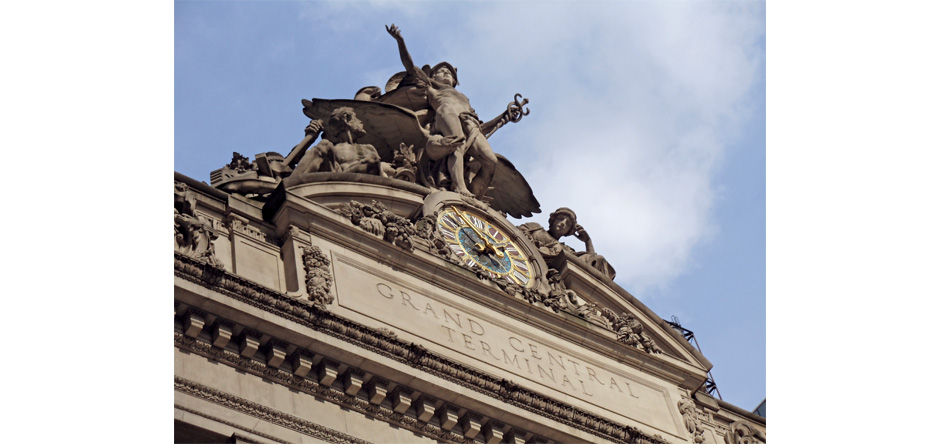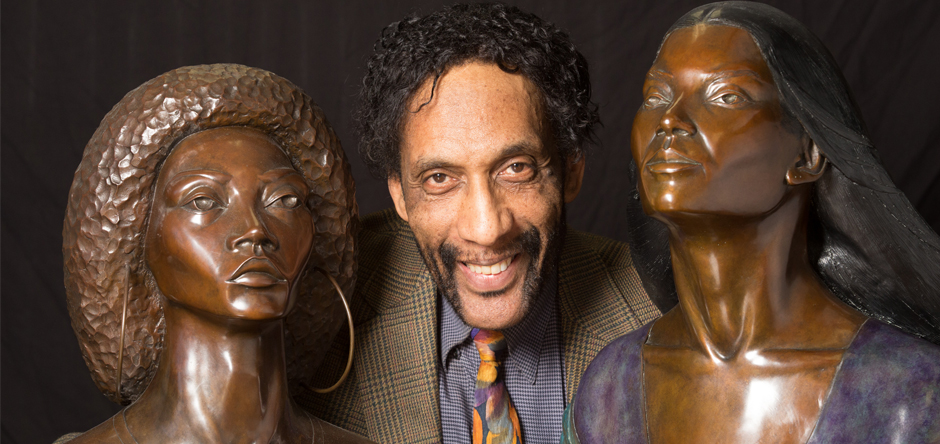Audrey Ronning Topping with some of the Chinese robes she and her family have collected. Photography by Bob Rozycki.
Clothing in all cultures is the most obvious manifestation of design in wearable art. Various kinds of apparel also represent the distinction between social classes. In the highly stratified society of Imperial China, the dress code was so rigid that a person’s clothing not only revealed the wearer’s place in the imperial hierarchy but a man’s rank within the civil service sector and his wife’s or concubine’s status. The designers in the palace workshops in Peking’s Forbidden City created artistic masterpieces in silk, embossed with iconographic symbols relating to topography or cosmic phenomena to be worn by the aristocrats and Mandarins of the imperial court.
When we were kids in Canada, my sister and I would sneak up to the attic on Halloween night, open our parents’ camphor trunks, put on old robes from the collection our missionary-grandfather brought back from China and wear them to trick or treat. We were a great success. But one “dark and stormy night,” we ran into Father. Uh, oh. He escorted us back home, confiscated our loot and gave us a serious lecture on the wonders of Chinese robes. I have been in awe of them ever since.
I learned, for example, that the imperial yellow silk Dragon Robe (gifu) I was wearing to pirate Halloween candy symbolized the universe. Wow. I later discovered that similar ones were once worn by emperors and empresses in the Qing (Ch’ing) Dynasty (1644-1912). The universe or cosmos was symbolized in the design elements inherent in most dynastic robes. A border of finely embroidered wavelike stripes rising from the hem represented the deep sea (lishui). The Eight Treasures of Buddhism were stitched or embroidered among the waves, undulating above the hem. These floating treasures included a wheel, a conch shell, the endless knot, an umbrella and flowers, all representing good fortune. Rock formations rising from the waves signified the earth. The four main five-claw dragons stitched with golden thread onto the chest, shoulders and back denoted the emperor’s semi-divine authority and all these cyphers, including red bats symbolizing longevity and happiness, coiled exquisitely amid the clouds of heaven.
Only when the robe was put on, making it a three-dimensional work of art, was the symbolism complete. The body of the wearer became the world axis. That Halloween, my father made it perfectly clear to me that neither my figure nor my social position was worthy enough to represent an axis that holds up the cosmos.
The Chinese designers used traditional motifs along with symbolic colors, stylized shapes and stunning fabrics, including silk brocades, cotton and raw silk. The handiwork, mostly done by women, was as subtle as it was beautiful, carrying its message most effectively. The ceremonial textiles not only revealed individual and collective aesthetic values but also exhibited the spiritual needs and political dynamics of each imperial dynasty.
Most ceremonial robes that survived are from the last one, the Manchu Qing Dynasty. The yellow color of the silk in a dragon robe meant that it could only be worn by the highest members of the imperial family — the emperor, the empress, the empress dowager (the emperor’s mother) and the favorite imperial concubines.
According to China scholars and contrary to popular myth, it was the brilliant yellow hue and not the embroidered five-claw dragons that made a robe imperial. The 12 symbols woven into the front, back and shoulders, representing special sacrificial rites performed by an emperor, can actually tell the connoisseurs which emperor wore it and in what period.
Twenty extraordinary royal robes were displayed in an exhibition called “Ceremonial Robes and Suits of Armor from the Imperial Court of China,” presented in 1980 at Bloomingdale’s department store in White Plains. The collection, representing five different imperial reigns spanning 1736 to 1908, was selected by the curators of the Palace Museum to salute the relationship between the People’s Republic of China and Bloomingdale’s. It was the first time these magnificently designed costumes had been seen outside the walls of the Forbidden City in Peking (Beijing). I was mortified to discover that one of the dragon robes, similar to my Halloween costume, had actually been worn by the Emperor Jia Qing (1796-1821).
During the last reign of the Qing dynasty, a large number of synthetic dyes derived from aniline and coal tars were introduced into China from the West. This changed the textile industry dramatically. After the 1870s, bright purple, magenta and orange became part of the artists’ repertoire and freed the designers to experiment with mixing colors. They used their artistic licenses to design stunning nonconventional robes for the emperors’ concubines. One dominant symbol was the white satin crane stitched amid elaborately embroidered golden clouds. Cranes are ancient symbols of immortality associated with the philosophy of Taoism. But rather than embroidering the birds in the traditional, stiff stance, the cranes began to fly. In various stages of flight, the cranes appeared beautifully naturalistic. The overall image created an ethereal, almost magical quality.
One beautifully embroidered orange silk robe exhibited in the Bloomingdale’s exhibit was worn by a favorite concubine of Emperor Dao Guang (1821-1850). While it was constructed like a dragon robe, the dragons depicted were different, enclosed within round medallions. Each dragon had been painstakingly worked in gold foil wrapped around a central thread, which was then sewn onto the robe. The long, contrasting navy blue “horse hoof” sleeves, made separately and sewn on at elbow length, were vestiges of the traditional Manchu riding costume. (They were originally long enough to cover the hands of the cavalry riders as their horses thundered triumphantly across the freezing northern steppes and over The Great Wall to conquer all of China.)
Informal robes and “ordinary dress” worn by the empresses or the imperial concubines, at home or strolling in the gardens of the Summer Palace, were also outstanding examples of Imperial design and craftsmanship. Patterns of flowers made with standardized stencils revealed a close observance of nature. Lotuses, peonies and orchid and magnolia blossoms were among the favorites. Chinese orchids, unlike the Western species, are not showy flowers, but they are highly symbolic. To the Chinese, the small flower with the strong fragrance represented the humble but brilliant scholar. Winter robes were padded with sheep’s wool and often woven with butterflies and five bats embroidered in petit point using silk floss. The combination has a special meaning, symbolizing longevity and happiness. In Chinese, the word for “bat” is “fu,” a pun on the Chinese word for happiness, which is also fu.
The art of design was apparent as well in suits of armor and military dress uniforms. A Qian Long Period (1736-1796) uniform shown in the exhibition at Bloomingdales’ followed the construction of simplified suits of armor dating from the 17th century. Such uniforms were worn by bannermen, or soldiers of the eight-banner system, who served to conquer China in 1644. This system became the united establishment of Manchu military, administrative and commercial forces for 300 years. The uniforms were made in four color combinations — red with white trim, yellow with red, blue with red and white with red trim. These dress costumes were designed for mobility when marching or riding horseback. Metal studs represented the actual suits of armor. The most spectacular Qing coat of mail I saw in the Palace Museum of the Forbidden City was made of 600,000 gold and silver links.
To my delight, on special occasions, like Chinese New Year, my father would wear one of the Chinese robes he had collected in China. His favorite was a full-length navy blue coat embroidered with terrifying dragons. It is now locked, with many others, in my camphor trunk in case my grandchildren get any crazy ideas.




